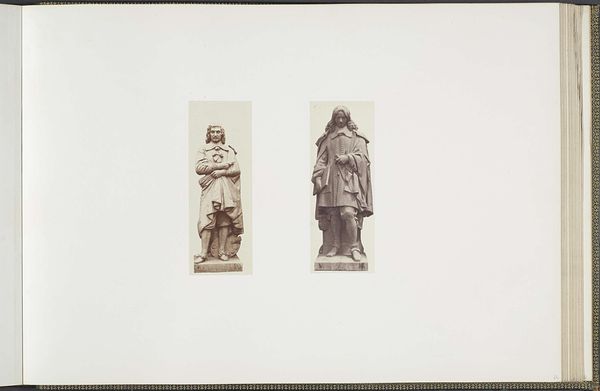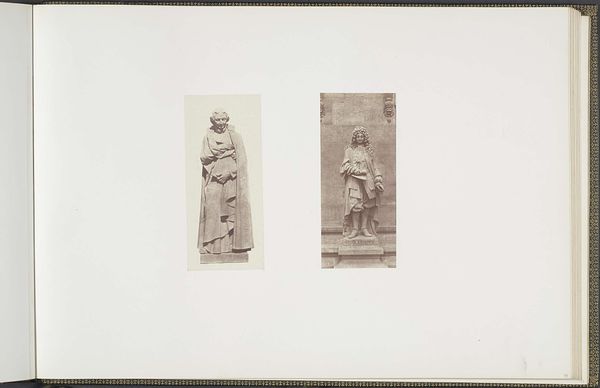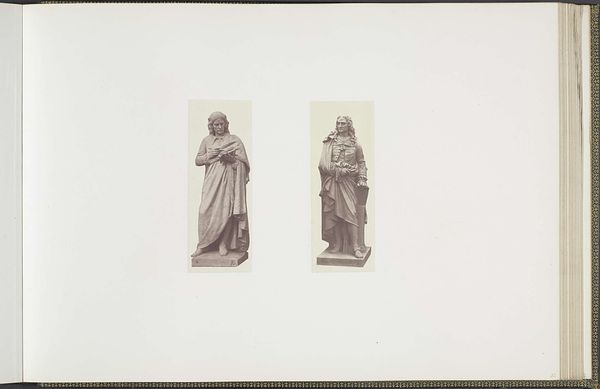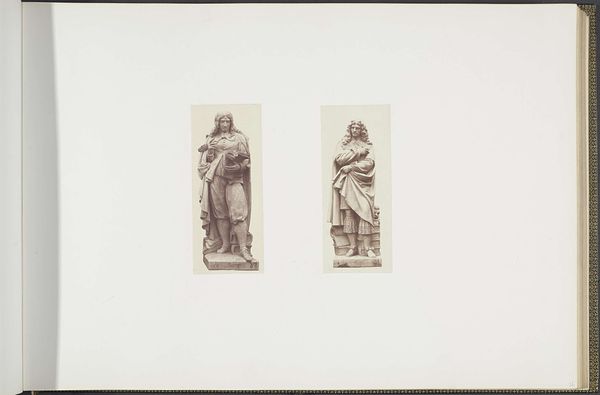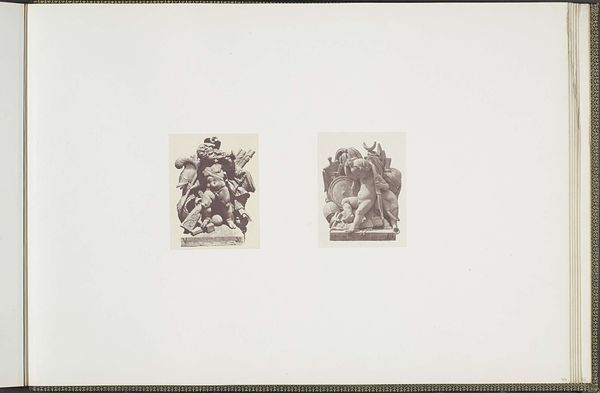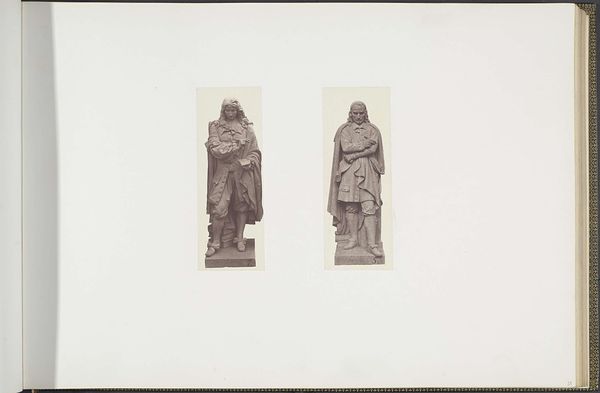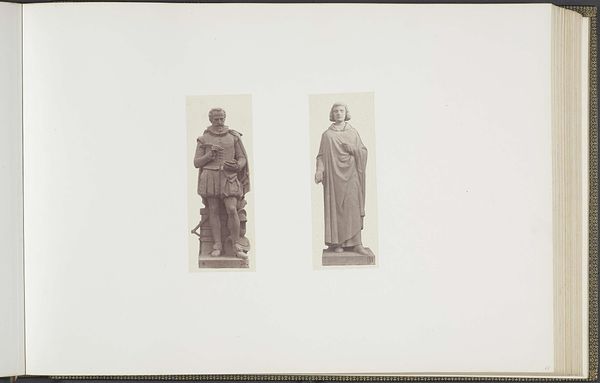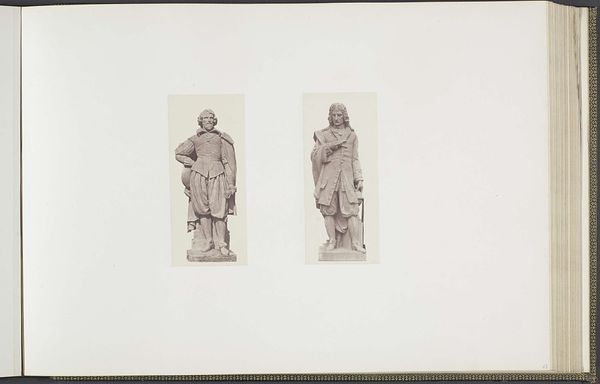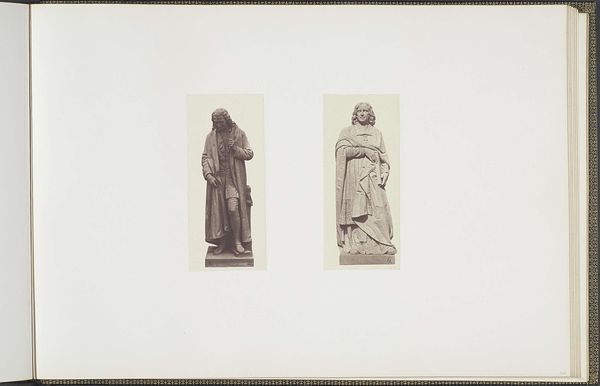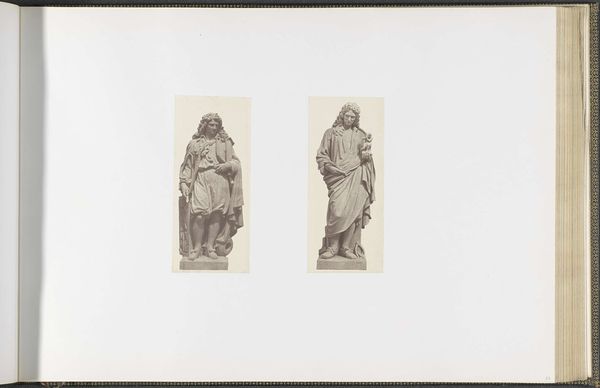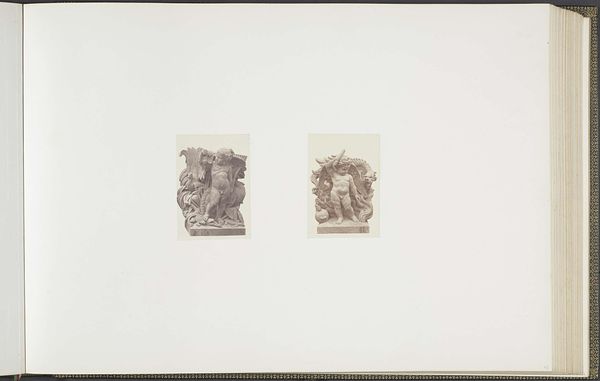
Gipsmodellen voor beeldhouwwerken op het Palais du Louvre: links "Palissy" door Jean Pierre Victor Huguenin en rechts "Rigaud" door Victor Therasse c. 1855 - 1857
0:00
0:00
print, photography, sculpture, albumen-print
#
portrait
#
neoclacissism
# print
#
photography
#
sculpture
#
history-painting
#
albumen-print
Dimensions: height 382 mm, width 560 mm
Copyright: Rijks Museum: Open Domain
Editor: So, here we have Edouard Baldus's photograph, "Gipsmodellen voor beeldhouwwerken op het Palais du Louvre," created sometime between 1855 and 1857. It shows plaster models of sculptures. I'm immediately struck by the way these figures, even as copies of copies, seem to carry so much historical weight. What do you see in this image? Curator: These figures certainly resonate with history. I’m drawn to how Baldus’s photograph, an early albumen print, captures not just the sculptures themselves, but also the very *idea* of historical representation. Note the neoclassical style. It’s a conscious echo of an ideal past. What feelings do the chosen subjects—Palissy, the potter, and Rigaud, the painter— evoke for you? Editor: They feel like embodiments of creative genius, like figures meant to inspire a sense of national pride. Is it fair to assume the choice of these figures speaks to a larger cultural narrative the French were trying to build for themselves? Curator: Absolutely. Palissy’s struggles to master his art, Rigaud’s portraits immortalizing powerful figures…they're carefully chosen to construct a cultural lineage. Consider also that these are models *for* sculptures intended for the Louvre. The layers of representation – photo of plaster model, of intended artwork, of a famous artist, exhibited at the most famous French museum -- accumulate meaning. How do those layers influence the way we read the photograph now, 150 years later? Editor: Knowing all that, I see how the image almost feels like a declaration, an attempt to solidify a certain version of history. This photograph reveals so much about how societies use art to define themselves. Curator: Precisely. By understanding the symbols, we uncover the narrative that was consciously created.
Comments
No comments
Be the first to comment and join the conversation on the ultimate creative platform.
